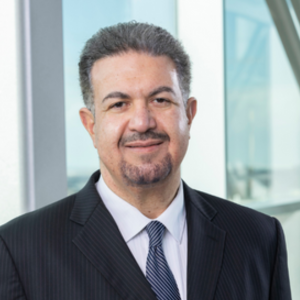A multiyear project on the University of Colorado Anschutz Medical Campus to improve models for evaluating potential cancer-fighting therapies before they go to clinical trials has been awarded the first of what researchers hope will be several grants from the National Cancer Institute.
The project focuses on immunotherapies for non-small cell lung cancer (NSCLC), which represents about 80% to 85% of all diagnosed lung cancers. About 350 people in the United States die from lung cancer each day, mostly from NSCLC.
CU Cancer Center leader Hatim Sabaawy, MD, PhD, who will head the research, says there is an “urgent need” for new treatment testing models that allow “for more predictive responses to therapy.” The work, he says, could “transform the whole field of immunotherapy and oncology research.”
→ ‘A Way of Embodying Hope’: 5-Year Lung Cancer Survivors Celebrate
The NCI’s initial award of $750,000 for the first year of the study is “is the first step in the fulfillment of a mission,” says Sabaawy, a professor in the CU Department of Medicine’s Division of Medical Oncology who was appointed the CU Cancer Center’s associate director of translational research in 2022.
“This is something I’ve been trying to do for a long time,” he says, “and having the funding to initiate this work, with the potential of additional funding, is very exciting. My goal on this campus is to increase the number of investigator-initiated trials, and without tumor microenvironment (TME) models that accurately reflect responses to treatments in patients, my mission will not be complete.”
Bench to bedside
The project corresponds to key themes in Sabaawy’s career. One is translational medicine: quickly moving the results of medical discoveries in the lab “from bench to bedside” to benefit patients through clinical trials. Another is precision medicine: developing personalized treatments for patients based on their genetics and other individual factors.
“The essence of the work is to have better models for predicting different types of therapies, but particularly immunotherapies,” Sabaawy says. Traditional methods of testing new therapies before they can go to clinical trials involve models called patient-derived xenografts, or PDXs, in which cells from a patient’s tumor are implanted into mice whose immune system has been suppressed. But that method as traditionally employed doesn’t always accurately predict how a patient would respond to the therapy being tested, he says.
“The holy grail of the field is to test therapies with tumor cells from a patient with immune and TME cells from the same patient,” Sabaawy says.
→ For Many Cancers, 5-Year Survival Rates at CU Cancer Center Exceed National Rates
The resulting testing model is called autologous HIS-PDX – autologous, meaning using tissues from same person; HIS, meaning human immune system.
The key challenge, Sabaawy says, is that “once immune cells are removed from the body, they don’t regenerate. The solution is called reprogramming — basically taking any kind of cell and bringing it back to the way it was during embryonic development, then maturing these cells in organoids, which are mini-organ stem cell cultures, to generate immune cells.” The reprogrammed cells are called induced pluripotent stem cells, or iPSCs.

“We’ll have organoid models with the patient’s own tumor cells and the patient’s own immune cells to make the autologous HIS-PDX,” Sabaawy says. “It’s the ideal model for testing any immunotherapy, because every response will reflect the response of these tumor cells as if the therapy is given to the patient in the clinic.”
A cross-campus collaboration
The project will generate the HIS-PDX models using iPSC-derived immune cells, assess how well the process works, and test the model’s responses to immune checkpoint inhibitors, a kind of immunotherapy.
Sabaawy anticipates a four-year time frame for the study. Beyond the $750,000 in initial funding, an application to the NCI for $2.5 million is to fund related work. “By the end of the four years, we should have these models optimized and tested for different immunotherapies and validated for use to test other therapies in various cancers,” he says.
→ A Combination of Targeted Therapies Proves Effective Against Mutation-Driven Lung Cancer
The research involves a multidisciplinary collaboration across the CU Anschutz Medical Campus, including CU Cancer Center members Paul Bunn, MD; Ross Camidge, MD, PhD; and Sharon Pine, PhD, all from the thoracic oncology group at the Division of Medical Oncology; Daniel Merrick, MD, of the CU Department of Pathology; Julie Lang, MD, of the CU Department of Immunology and Microbiology; Ganna Bilousova, PhD; and Igor Kogut, PhD, of the CU Department of Dermatology; and the Gates Institute’s Stem Cell Biobank and Disease Modeling Core Facility.
“Having the right resources and cores here to do this multidisciplinary work is very fortunate,” Sabaawy says.




